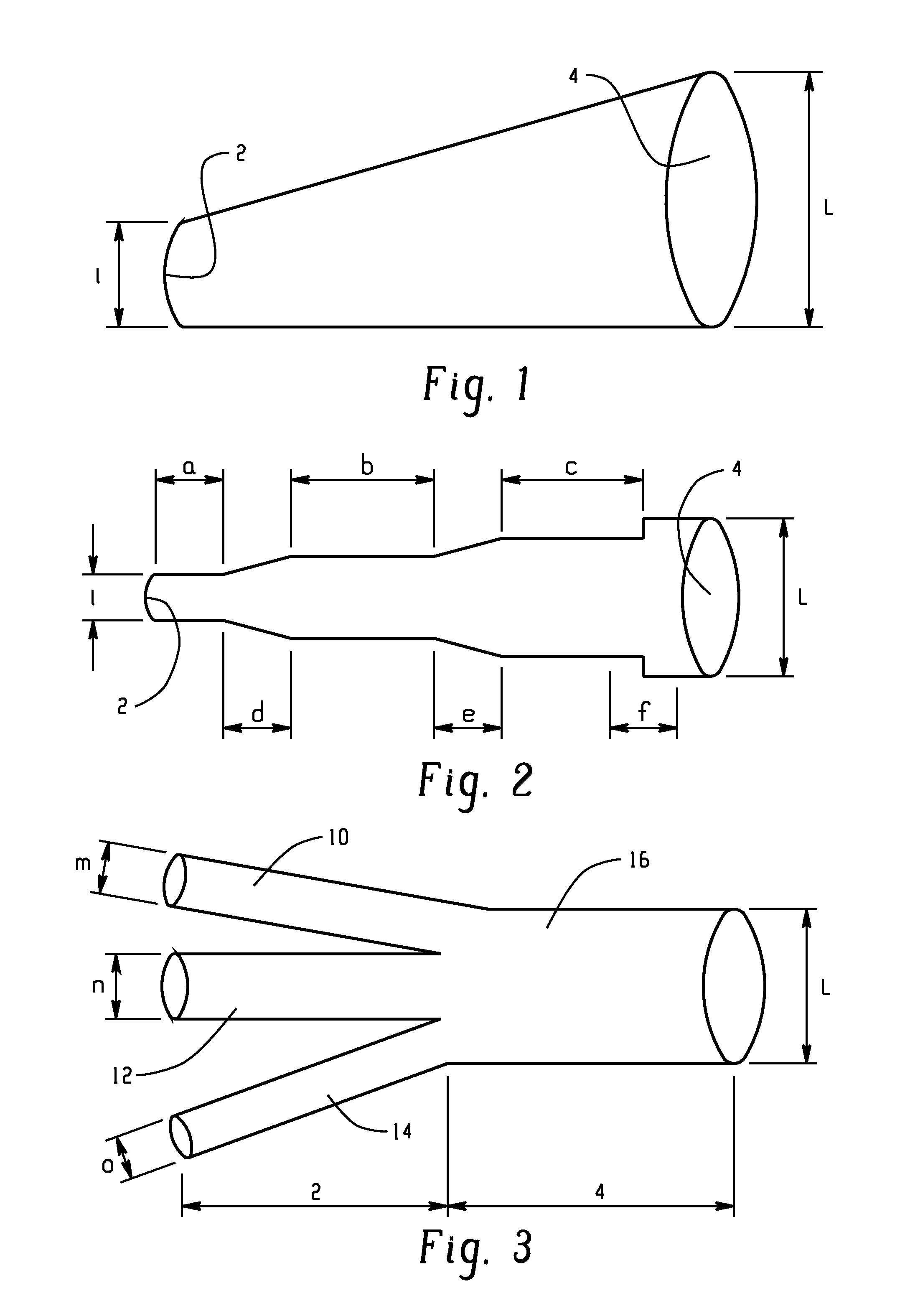Method for producing carbonates
a carbonate and carbonate technology, applied in the field of carbonate production, can solve the problems of unsuitability for use of diphenyl carbonates containing high levels of organic chlorides, adverse color, and formation of organic chlorides
- Summary
- Abstract
- Description
- Claims
- Application Information
AI Technical Summary
Benefits of technology
Problems solved by technology
Method used
Image
Examples
examples
[0122]The Applicants surprisingly found that the heat removal rate varies inversely with the tube diameter and that the peak tube temperature increases with the increase in tube diameter, for example, from a lab scale operation performed in a tube with an outer diameter 0.5 to an industrial tube with an outer diameter of 2 inches. To quantify this relationship between peak tube temperature and the carbon tetrachloride formed in the synthesis of phosgene, a 1-D model was developed in Aspen custom modeler to show the effect of reactor dimensions on the process performance.
[0123]The reaction that is being modeled can be written as
CO+Cl2→COCl2
where the feed to the reactor comprise a mixture of CO and Cl2 with a molar ratio of CO to Cl2 of 1:1. A simple 1-D plug flow model was written for the material and energy conservation equations using the following:
[0124]The governing mass balance equations in non-dimensional form (1):
Ni*(x)x*=Rate(x)×ρb×π×R2×LN1(0)+N2(0)i=CO,Cl2,COCl2(1)
[0125]The...
embodiment 1
[0133]A method of producing a carbonate, comprising: reacting carbon monoxide and chlorine in a phosgene reactor in the presence of a catalyst to produce a first product comprising phosgene; wherein carbon tetrachloride is present in the first product in an amount of 0 to 10 ppm by volume, based on the total volume of phosgene; wherein the phosgene reactor is capable of producing greater than or equal to 2,000 kilograms of the first product per hour; and reacting a monohydroxy compound with the phosgene to produce the carbonate; wherein the phosgene reactor comprises a tube, a shell, and a space located between the tube and the shell; and wherein the catalyst is disposed in the tube and a cooling medium is located in the space, or the catalyst is disposed in the space and a cooling medium is located in the tube; wherein the tube comprises one or more of a mini-tube section and a second tube section; a first concentric tube concentrically located in the shell; a twisted tube; an inte...
embodiment 2
[0134]The method of Embodiment 1, wherein a peak temperature in the phosgene reactor is less than 800° C.
PUM
| Property | Measurement | Unit |
|---|---|---|
| Temperature | aaaaa | aaaaa |
| Temperature | aaaaa | aaaaa |
| Weight | aaaaa | aaaaa |
Abstract
Description
Claims
Application Information
 Login to View More
Login to View More - R&D
- Intellectual Property
- Life Sciences
- Materials
- Tech Scout
- Unparalleled Data Quality
- Higher Quality Content
- 60% Fewer Hallucinations
Browse by: Latest US Patents, China's latest patents, Technical Efficacy Thesaurus, Application Domain, Technology Topic, Popular Technical Reports.
© 2025 PatSnap. All rights reserved.Legal|Privacy policy|Modern Slavery Act Transparency Statement|Sitemap|About US| Contact US: help@patsnap.com



